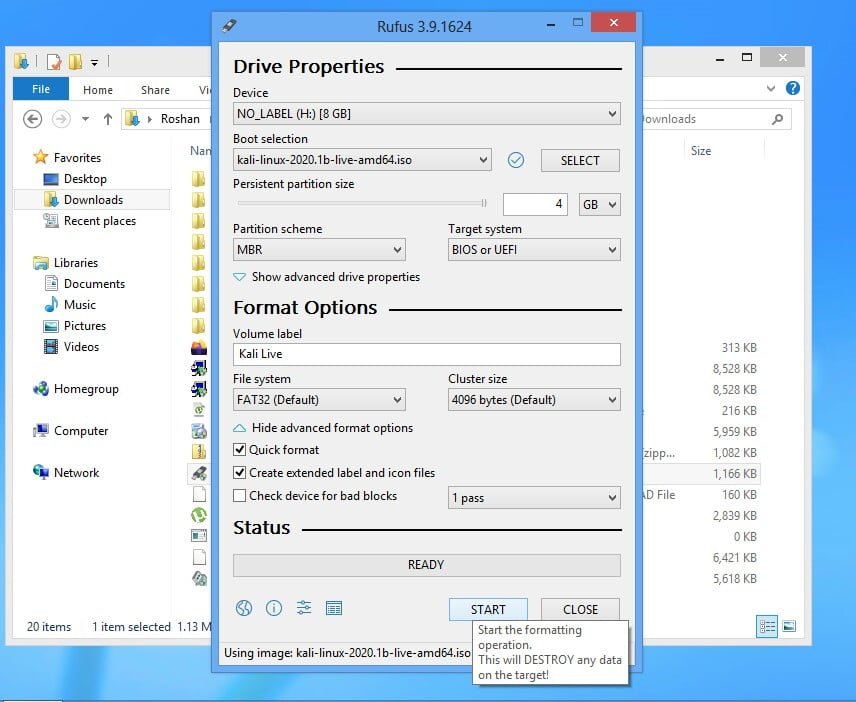

- #How to make a live kali linux usb with storage install
- #How to make a live kali linux usb with storage drivers
- #How to make a live kali linux usb with storage driver
- #How to make a live kali linux usb with storage download
To sum it up, for flash-based media such as USB flash drives or SD cards, ext4 without a journal should be fine, which can be created with mkfs.ext4 -O "^has_journal" /dev/sdXX. It is highly recommended to review the Improving performance#Reduce disk reads/writes article prior to selecting a file system.This also reduces the performance impact of slow writes. When installing to a device that offers a limited number of writes before it wears out, such as a USB drive, SD card, or similar, reduce the number of writes to increase the device lifetime. The fallback image should be used for maximum compatibility. If you add nomodeset as a kernel parameter as a preemptive measure you may have to adjust the display resolution manually when using machines with Nvidia video cards.

Nouveau in particular needs KMS to determine the correct display resolution.
#How to make a live kali linux usb with storage driver
See the wiki page on your specific driver for details.
#How to make a live kali linux usb with storage drivers
Warning: Some Xorg drivers will not work with KMS disabled.
#How to make a live kali linux usb with storage install

This would trick operating systems into treating your USB mass storage device as an external hard disk and allow you to use whichever partitioning scheme you choose. Some tools are available online that may allow you to flip the Removable Medium Bit (RMB) on your USB mass storage device. Remember to install dosfstools and ntfs-3g. Note that the data partition may need to be the first partition on the device, as Windows assumes that there can only be one partition on a removable device, and will happily automount an EFI system partition otherwise.
#How to make a live kali linux usb with storage download

If booting from a Live USB, the installation cannot be made to the same removable medium you are booting from.


 0 kommentar(er)
0 kommentar(er)
